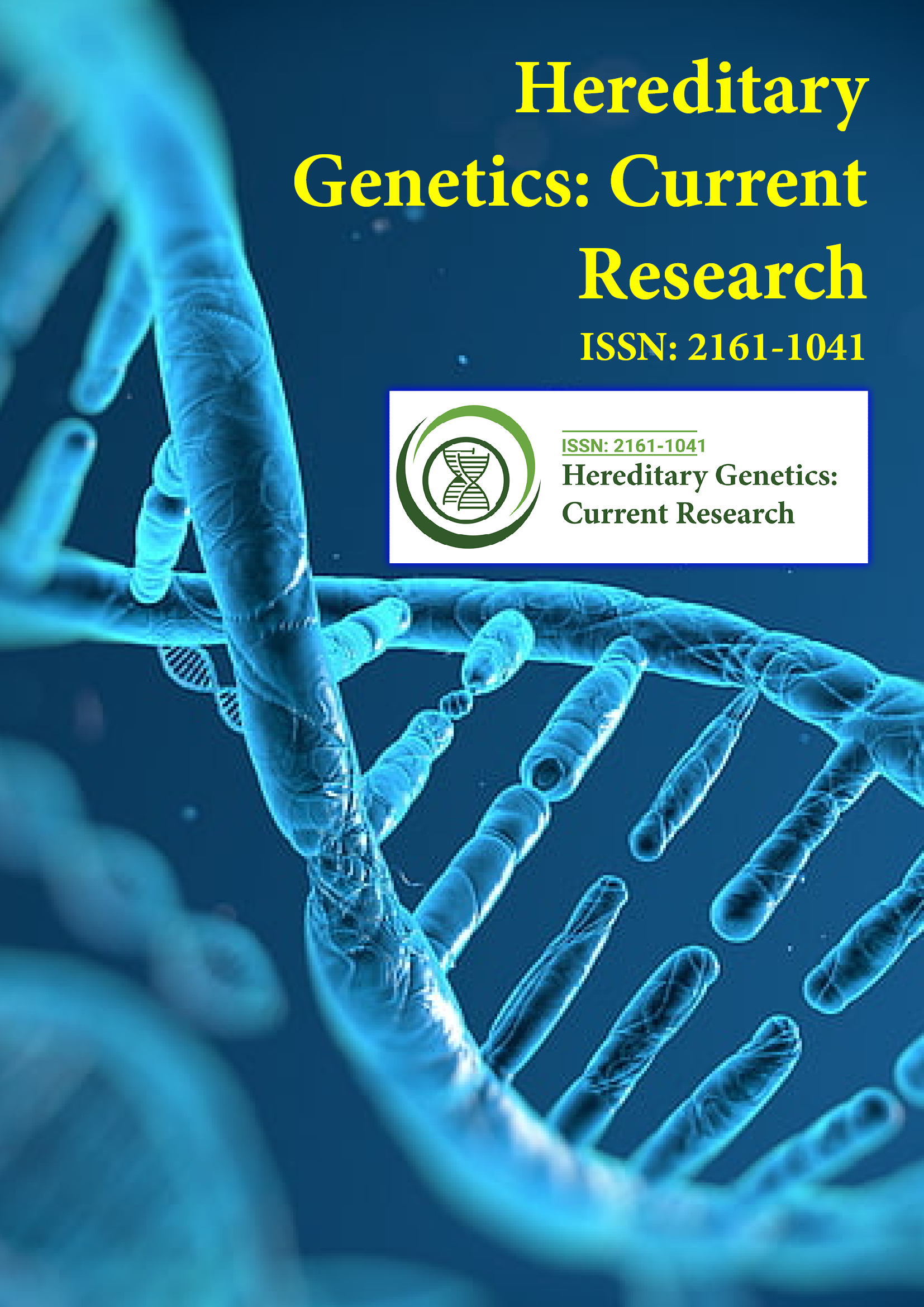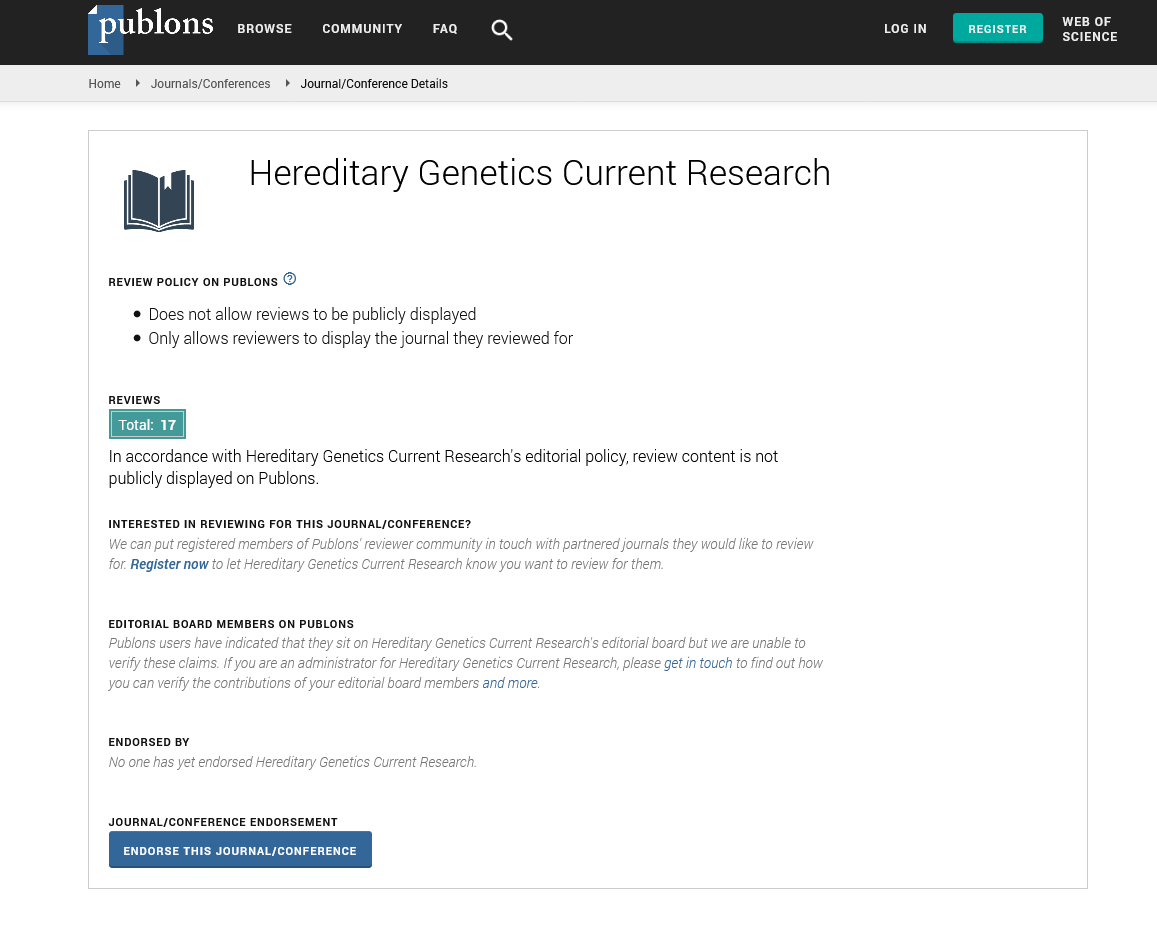Indexed In
- Open J Gate
- Genamics JournalSeek
- CiteFactor
- RefSeek
- Hamdard University
- EBSCO A-Z
- NSD - Norwegian Centre for Research Data
- OCLC- WorldCat
- Publons
- Geneva Foundation for Medical Education and Research
- Euro Pub
- Google Scholar
Useful Links
Share This Page
Journal Flyer

Open Access Journals
- Agri and Aquaculture
- Biochemistry
- Bioinformatics & Systems Biology
- Business & Management
- Chemistry
- Clinical Sciences
- Engineering
- Food & Nutrition
- General Science
- Genetics & Molecular Biology
- Immunology & Microbiology
- Medical Sciences
- Neuroscience & Psychology
- Nursing & Health Care
- Pharmaceutical Sciences
Perspective - (2024) Volume 13, Issue 1
Role of Urbanization in Earthworm Genetic Diversity and Phylogeography
Rheindt Fung*Received: 27-Feb-2024, Manuscript No. HGCR-24-26562; Editor assigned: 01-Mar-2024, Pre QC No. HGCR-24-26562 (PQ); Reviewed: 15-Mar-2024, QC No. HGCR-24-26562; Revised: 22-Mar-2024, Manuscript No. HGCR-24-26562 (R); Published: 29-Mar-2024, DOI: 10.35248/2161-1041.24.13.281
Description
Urban environments are rapidly expanding, reshaping landscapes and introducing novel ecological dynamics. Among the multitude of species adapting to these human-altered habitats, earthworms are particularly intriguing due to their vital roles in soil health and ecosystem functioning. Understanding the genetic diversity and phylogeographic patterns of urban earthworms can provide insights into how these organisms adapt to changing environments and offer broader implications for urban ecology and conservation. This article explores the environmental drivers behind genetic diversity and phylogeographic patterns in urban earthworms, highlighting the complex interactions between urbanization and species adaptation.
Urbanization and earthworm environment
Urbanization significantly transforms natural landscapes, creating fragmented and heterogeneous habitats. The conversion of natural areas into urban spaces introduces a variety of environmental changes, including altered soil properties, microclimate variations, and increased human activity. These changes can influence the habitat suitability for earthworms, affecting their distribution, population dynamics, and genetic diversity. Earthworms are sensitive indicators of soil health and ecosystem quality, as they are directly affected by soil conditions and organic matter availability. In urban areas, soil properties often differ from those in natural habitats due to factors such as pollution, construction activities, and changes in vegetation cover. These alterations can create new ecological niches and challenge earthworms to adapt to the modified environments.
Genetic diversity in urban earthworms
Genetic diversity is a critical component of species adaptability and resilience. In urban settings, genetic diversity among earthworm populations can be influenced by various environmental factors. Soil contamination, varying levels of organic matter and microclimatic conditions are among the key drivers affecting genetic variation.
Soil contamination: Urban soils often contain pollutants such as heavy metals, hydrocarbons, and other contaminants that can impact earthworm health and reproduction. The presence of these pollutants can create selective pressures, leading to the evolution of specific genetic traits that confer tolerance or resistance. Consequently, urban earthworm populations may exhibit genetic divergence from their rural counterparts.
Organic matter availability: The availability and quality of organic matter in urban soils can vary significantly. Areas with abundant organic matter, such as parks or garden spaces, may support higher densities of earthworms and greater genetic diversity. Conversely, regions with limited organic matter, such as heavily paved or barren areas, may have reduced earthworm populations and lower genetic diversity.
Microclimate variations: Urban heat islands and microclimatic variations in temperature and humidity can affect earthworm activity and survival. These variations can lead to different selective pressures and contribute to genetic differentiation among urban earthworm populations.
Phylogeographic patterns in urban earthworms
Phylogeography the study of the spatial distribution of genetic lineages, provides insights into how historical and environmental factors shape genetic variation across landscapes. In urban environments, phylogeographic patterns of earthworms can reveal the effects of habitat fragmentation, dispersal barriers, and historical land use on genetic structure. Urban landscapes are characterized by various barriers, such as roads, buildings, and impervious surfaces that can impede earthworm movement. These barriers can influence gene flow and contribute to the formation of isolated genetic lineages. Phylogeographic studies can help identify the extent to which these barriers impact earthworm populations and their genetic diversity. Areas that were once agricultural or industrial may have different soil properties and ecological conditions compared to newer urban developments. Historical land use can affect the genetic structure of earthworm populations by shaping their exposure to environmental changes and selective pressures.
Implications for urban ecology and conservation
Grasping how environmental factors influence genetic diversity and phylogeographic patterns in urban earthworms is crucial for urban ecology and conservation efforts. By identifying the factors that influence genetic variation can better assess the health of urban ecosystems and develop strategies to support biodiversity.
Ecosystem management: Knowledge of how environmental drivers affect earthworm genetic diversity can inform management practices aimed at enhancing soil health and ecosystem functioning. For example, promoting green spaces and minimizing soil contamination can help maintain diverse and resilient earthworm populations.
Conservation strategies: Conservation efforts in urban areas should consider the unique genetic and ecological needs of earthworm populations. Protecting and restoring habitats, addressing pollution sources, and facilitating connectivity between fragmented habitats can support the conservation of urban earthworm diversity.
Urbanization presents a complex array of environmental challenges and opportunities for earthworms. The interplay between soil properties, microclimate variations, and historical land use shapes the genetic diversity and phylogeographic patterns of urban earthworm populations. By unraveling these environmental drivers, we gain valuable insights into how earthworms adapt to urban environments and how we can better manage and conserve urban ecosystems. As cities continue to grow and evolve, understanding the genetic and ecological dynamics of urban species like earthworms will be essential for promoting biodiversity and ensuring the health of our urban environments.
Citation: Fung R (2024) Role of Urbanization in Earthworm Genetic Diversity and Phylogeography. Hereditary Genet. 13:281.
Copyright: © 2024 Fung R. This is an open access article distributed under the terms of the Creative Commons Attribution License, which permits unrestricted use, distribution, and reproduction in any medium, provided the original author and source are credited.

